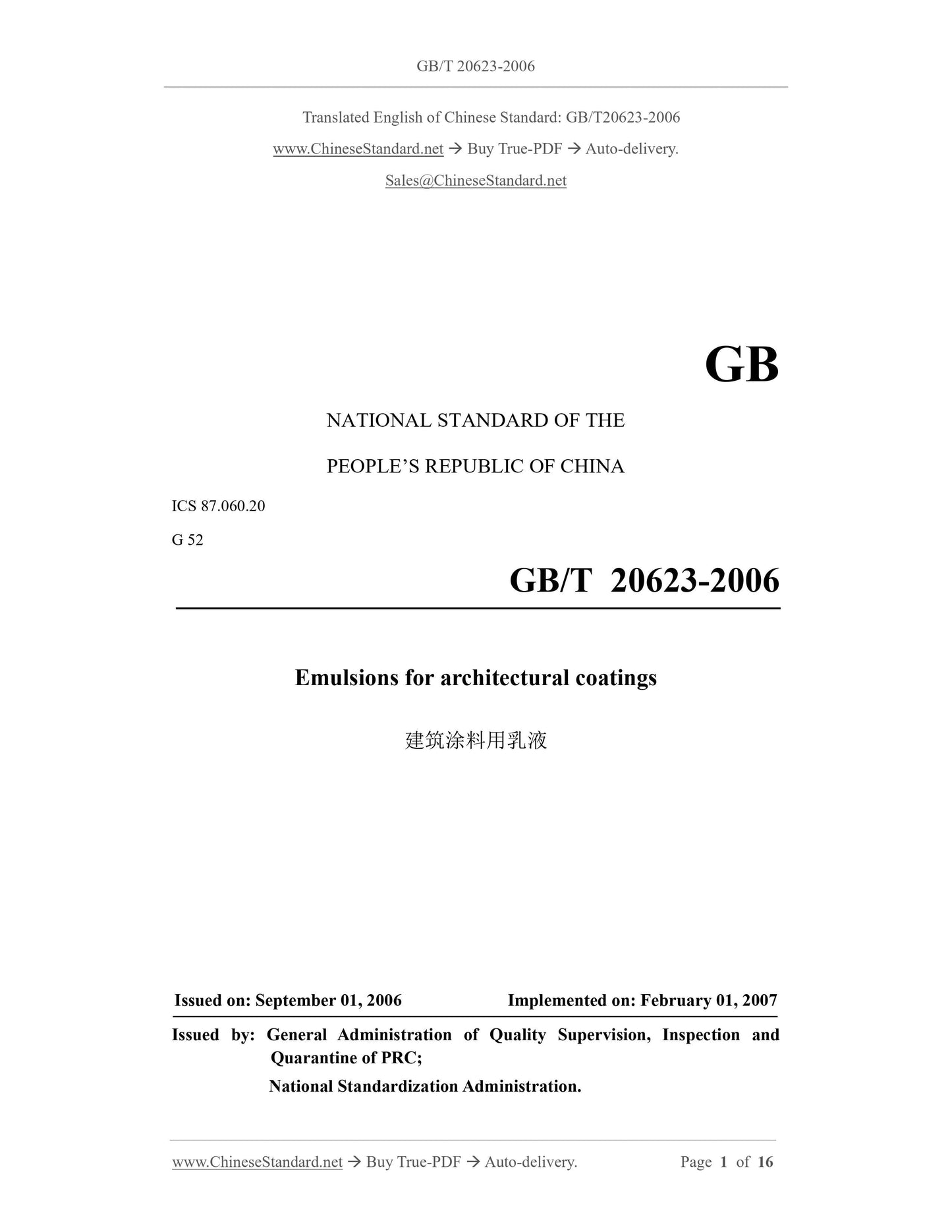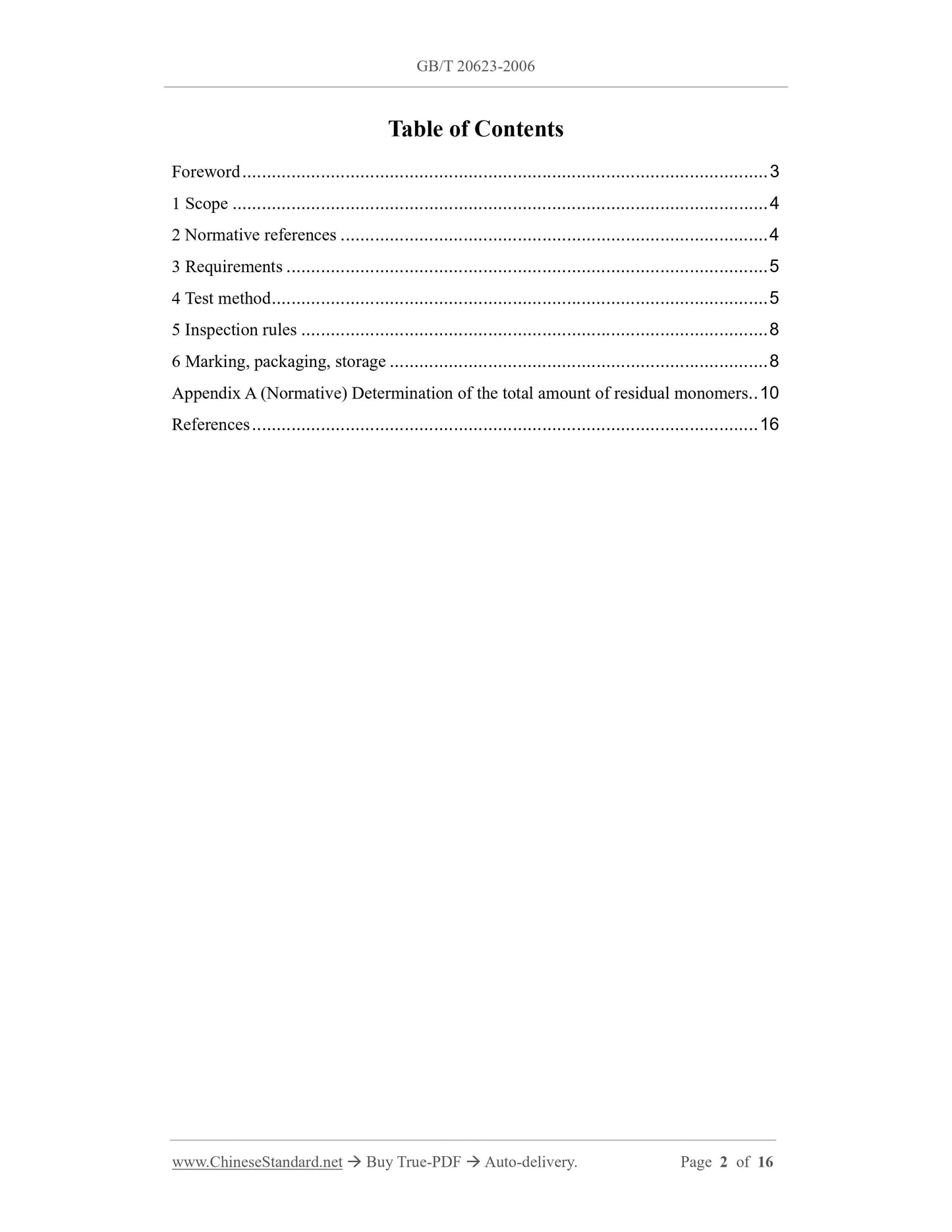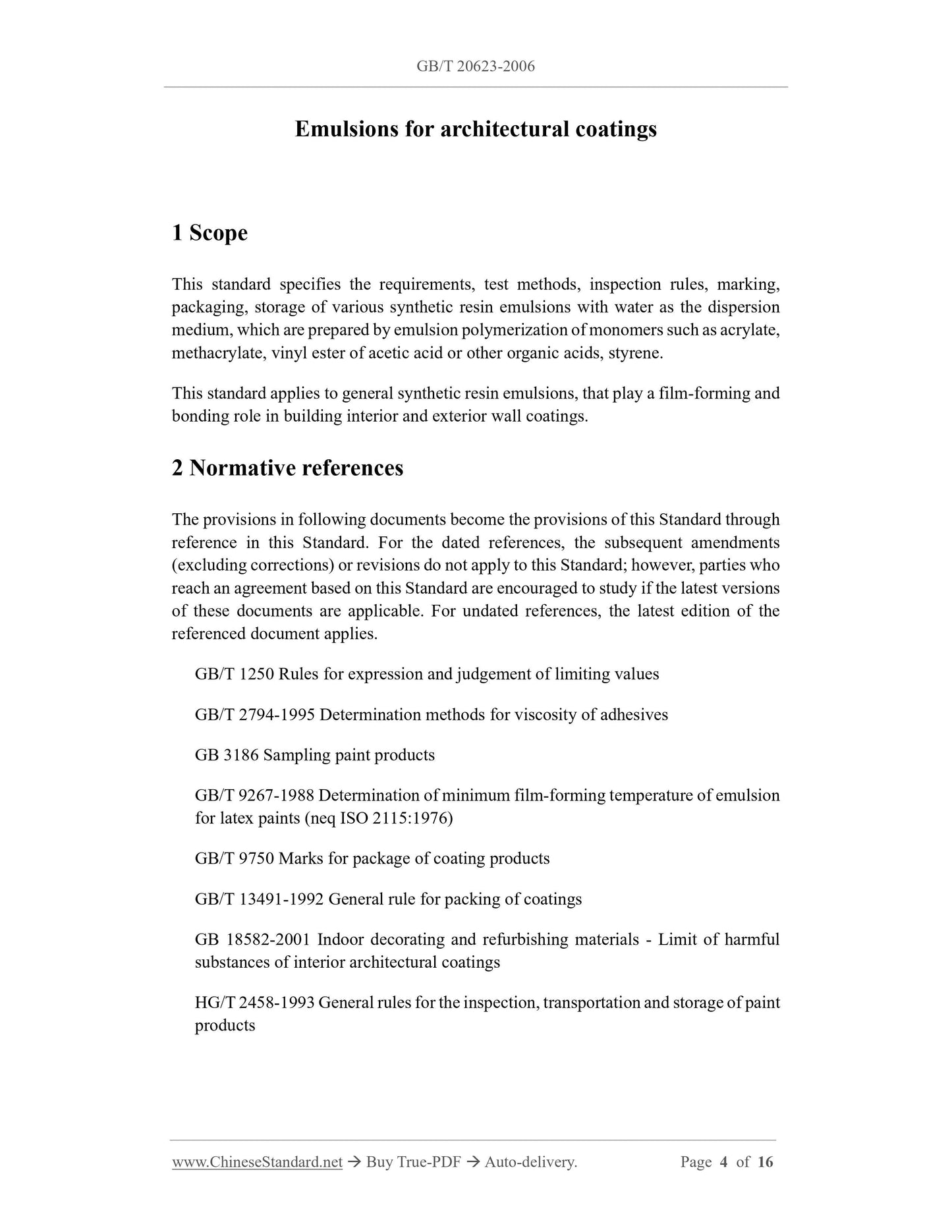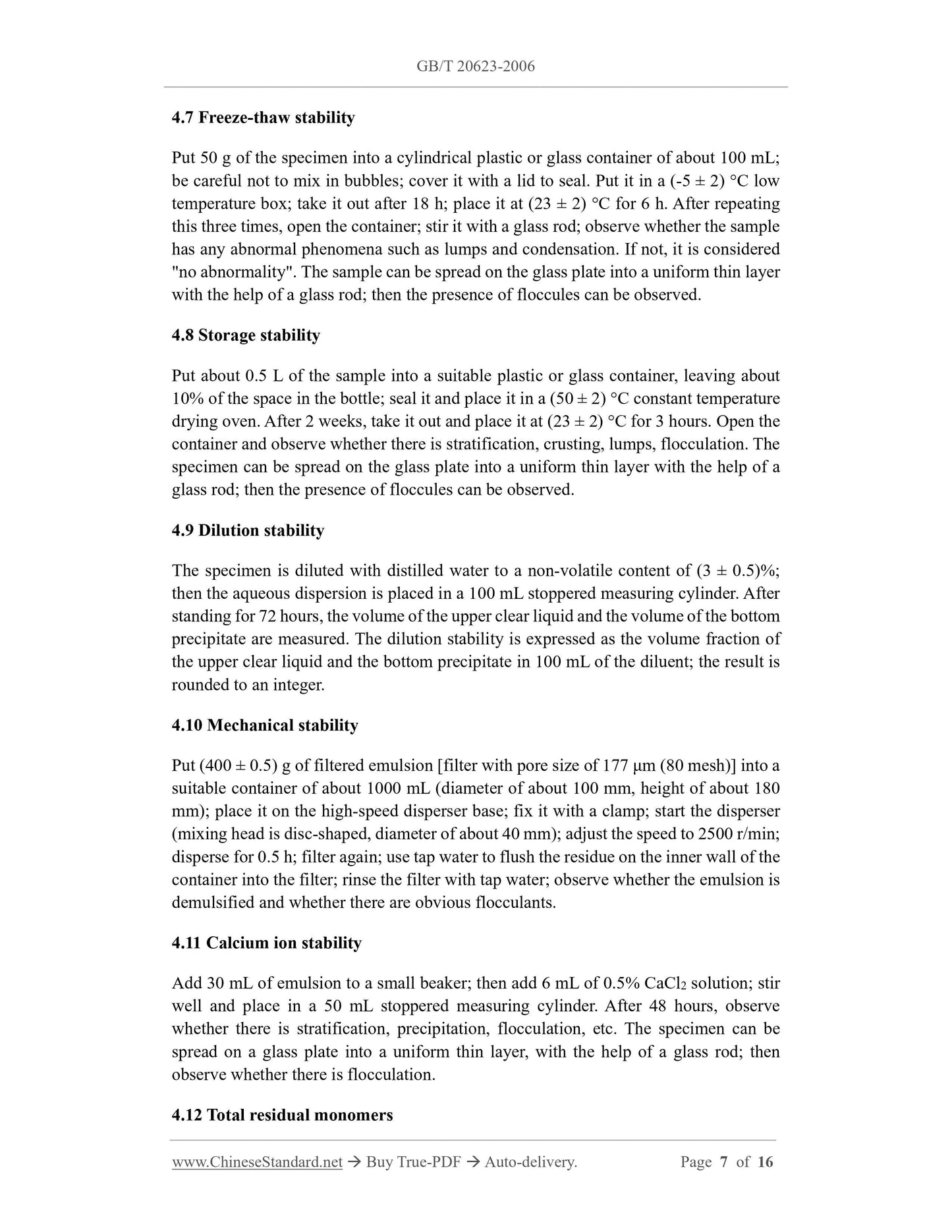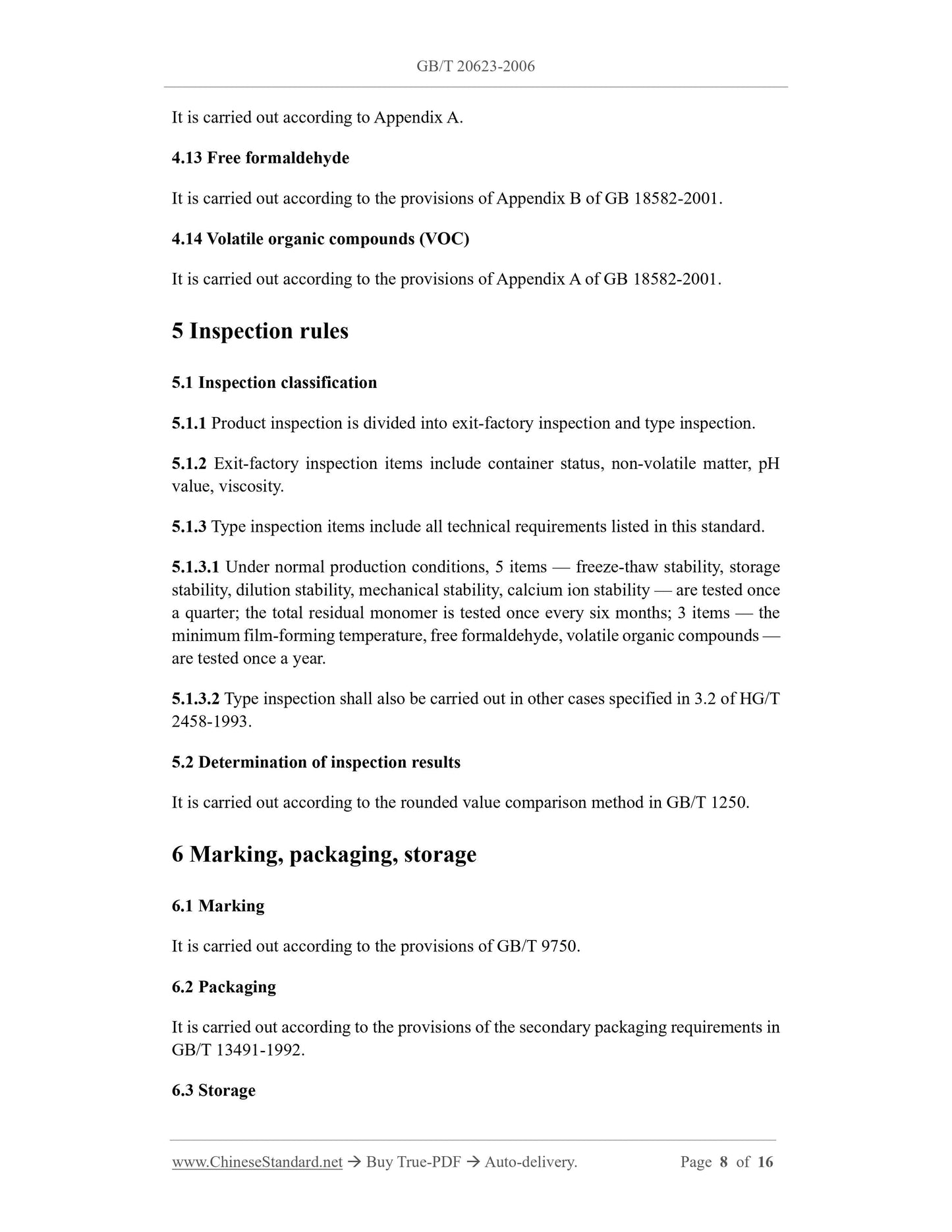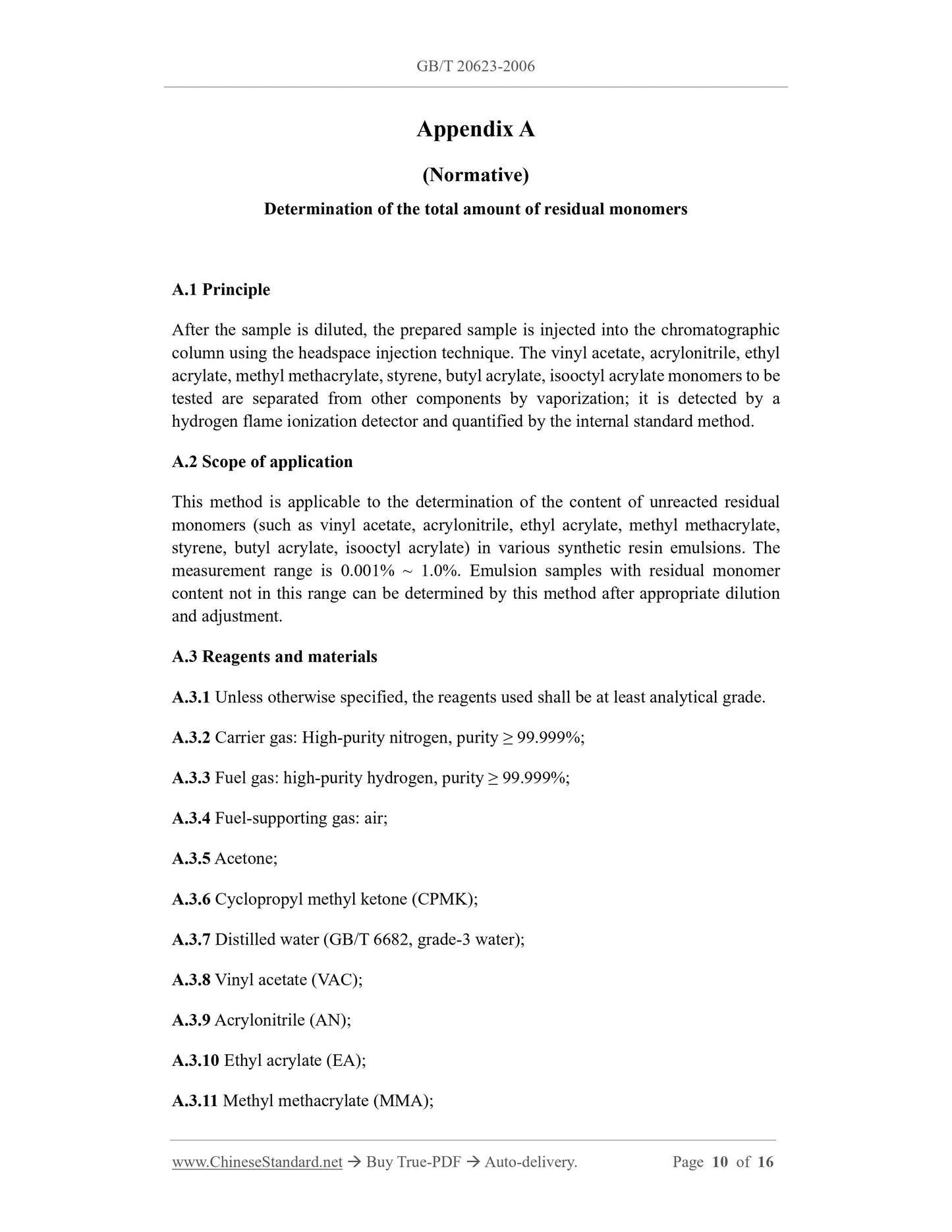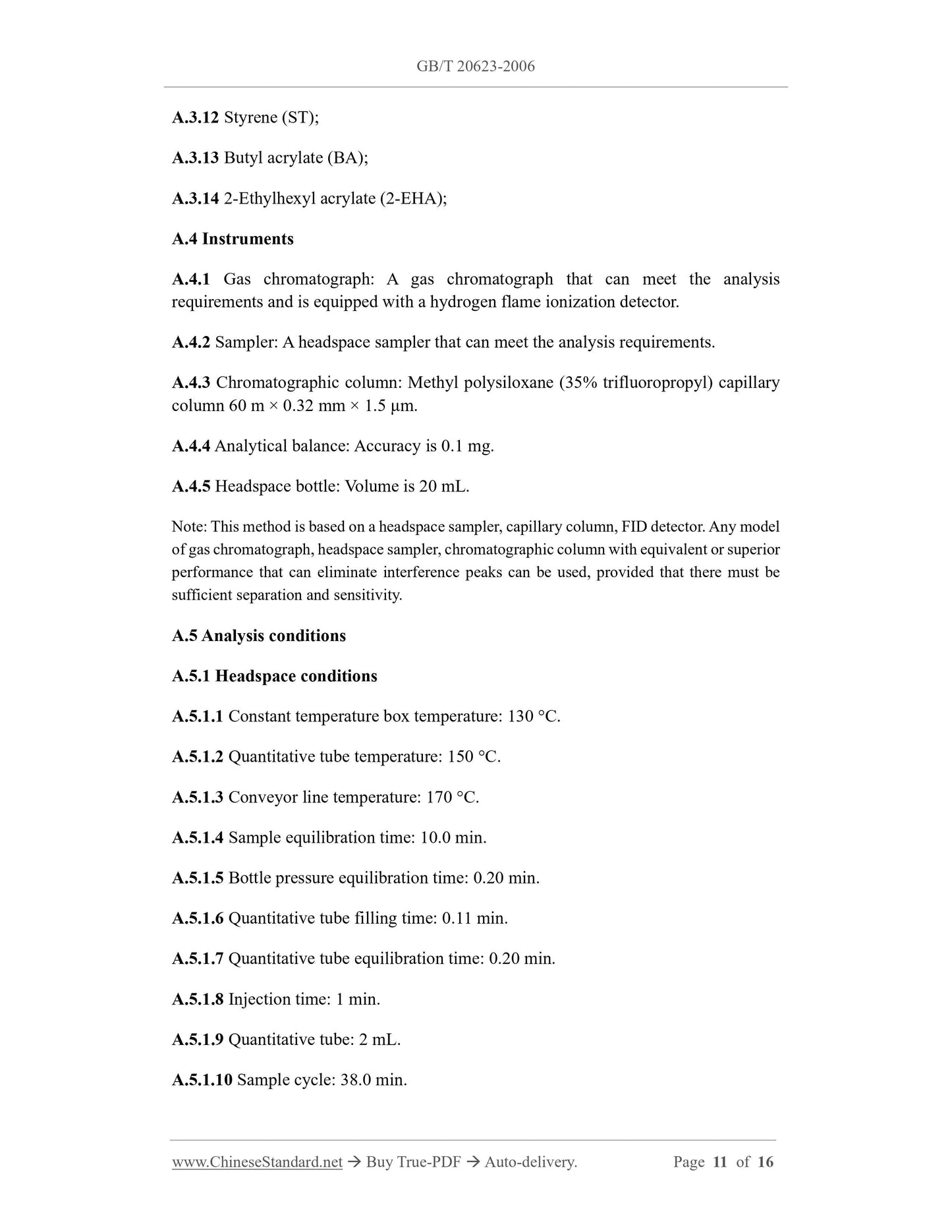1
/
of
7
www.ChineseStandard.us -- Field Test Asia Pte. Ltd.
GB/T 20623-2006 English PDF (GB/T20623-2006)
GB/T 20623-2006 English PDF (GB/T20623-2006)
Regular price
$125.00
Regular price
Sale price
$125.00
Unit price
/
per
Shipping calculated at checkout.
Couldn't load pickup availability
GB/T 20623-2006: Emulsions for architectural coatings
Delivery: 9 seconds. Download (and Email) true-PDF + Invoice.Get Quotation: Click GB/T 20623-2006 (Self-service in 1-minute)
Newer / historical versions: GB/T 20623-2006
Preview True-PDF
Scope
This standard specifies the requirements, test methods, inspection rules, marking,packaging, storage of various synthetic resin emulsions with water as the dispersion
medium, which are prepared by emulsion polymerization of monomers such as acrylate,
methacrylate, vinyl ester of acetic acid or other organic acids, styrene.
This standard applies to general synthetic resin emulsions, that play a film-forming and
bonding role in building interior and exterior wall coatings.
Basic Data
| Standard ID | GB/T 20623-2006 (GB/T20623-2006) |
| Description (Translated English) | Emulsions for architectural coatings |
| Sector / Industry | National Standard (Recommended) |
| Classification of Chinese Standard | G52 |
| Classification of International Standard | 87.060.20 |
| Word Count Estimation | 11,129 |
| Date of Issue | 2006-09-01 |
| Date of Implementation | 2007-02-01 |
| Quoted Standard | GB/T 1250 |
| Regulation (derived from) | China Announcement of Newly Approved National Standards No. 11 of 2006 (No. 98 overall) |
| Issuing agency(ies) | General Administration of Quality Supervision, Inspection and Quarantine of the People's Republic of China, Standardization Administration of the People's Republic of China |
| Summary | This standard specifies the esters of acrylic acid, methacrylic acid esters, cellulose acetate or other vinyl esters of organic acids, such as styrene monomer by emulsion polymerization using water as a dispersion medium, various types of synthetic resin emulsion requirements, test methods, inspection rules, marking, packaging and storage. This standard applies to the building interior and exterior paint film adhesion plays a role in the general synthetic resin emulsion. |
Share
